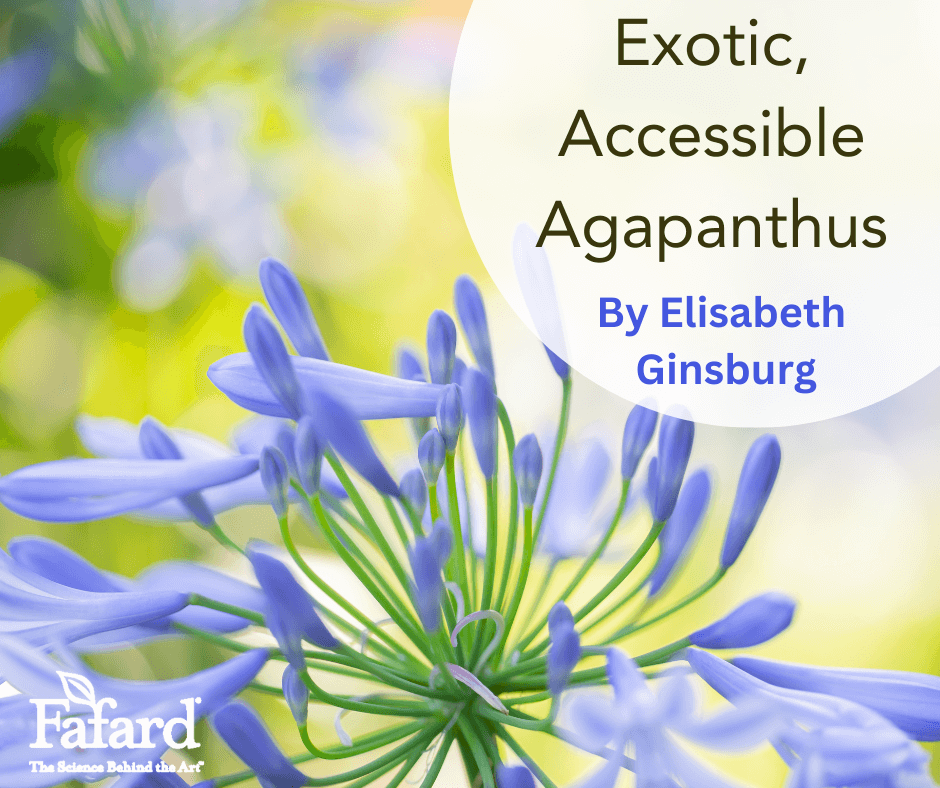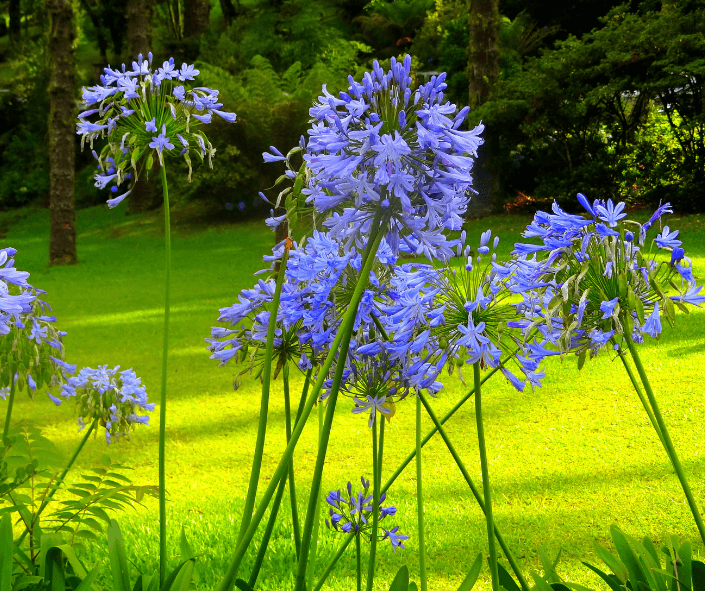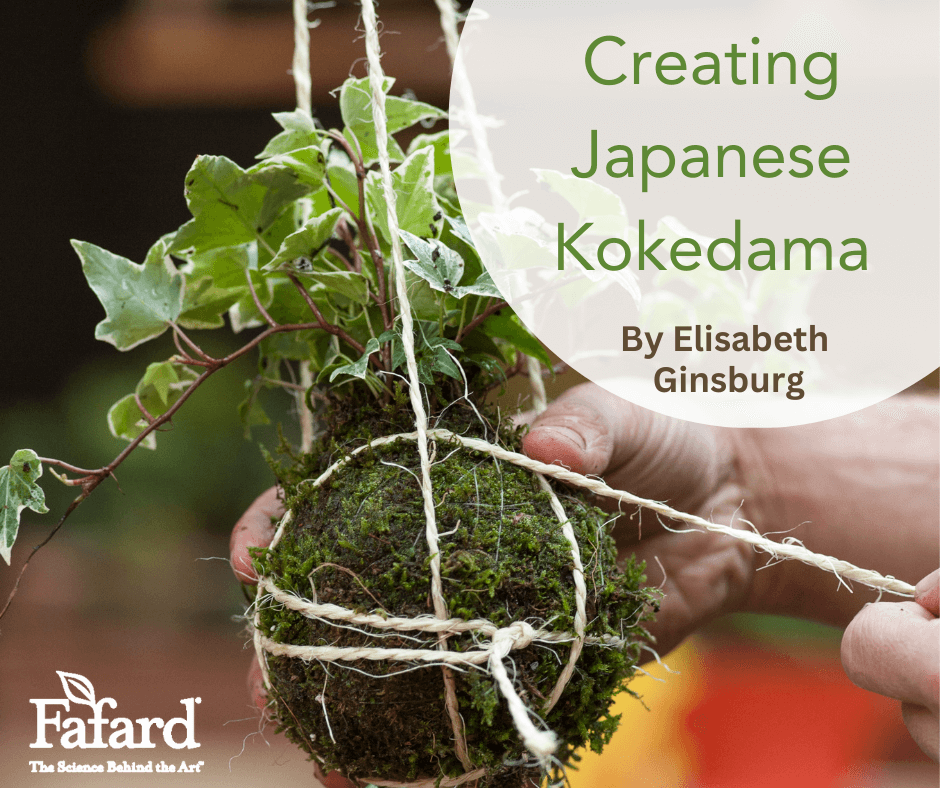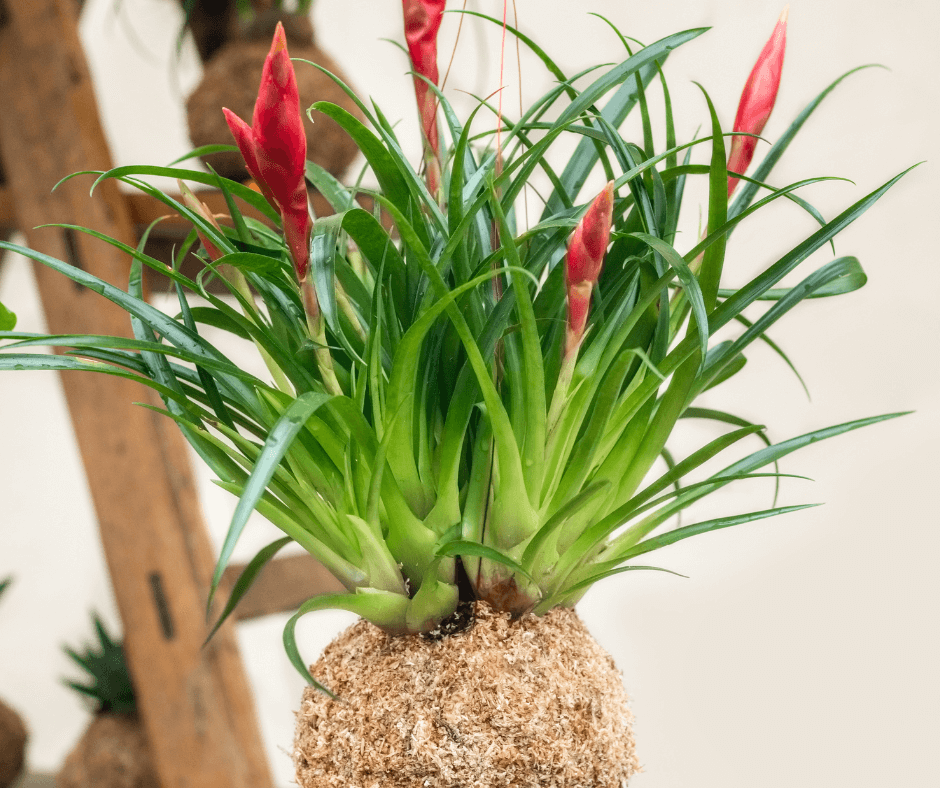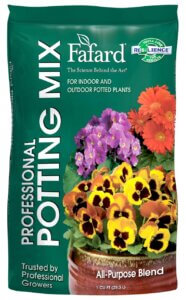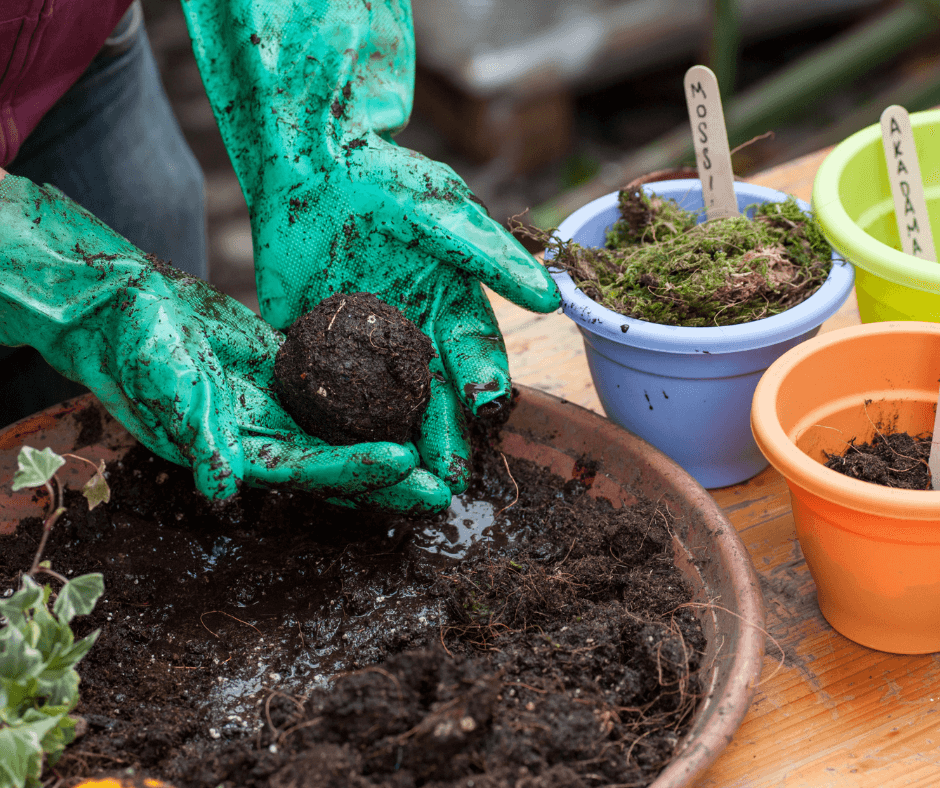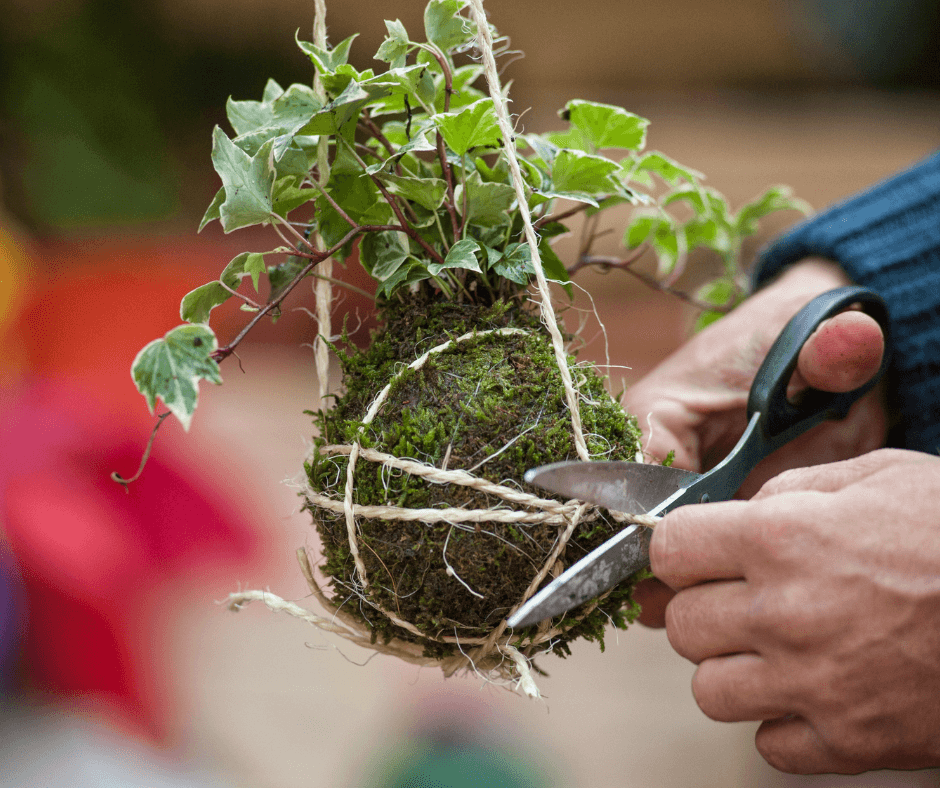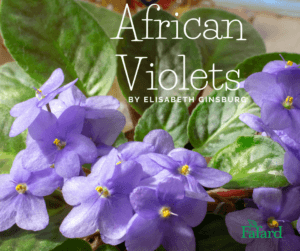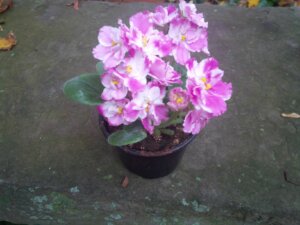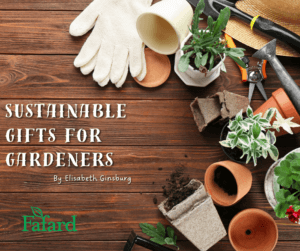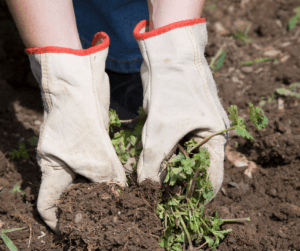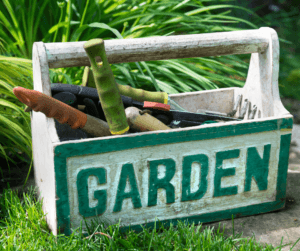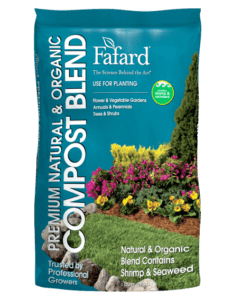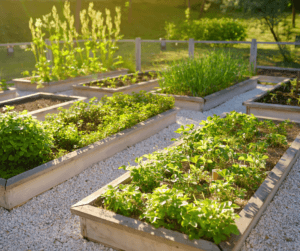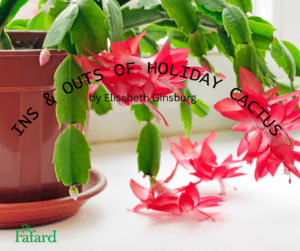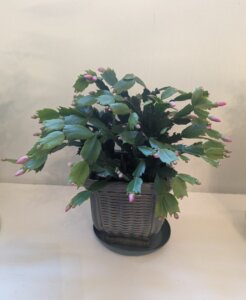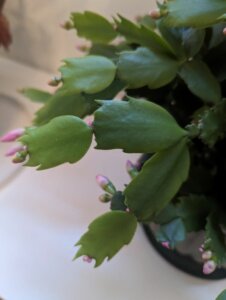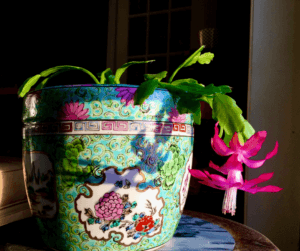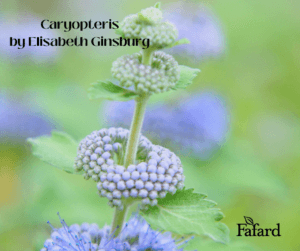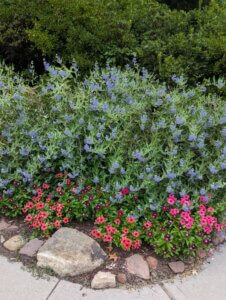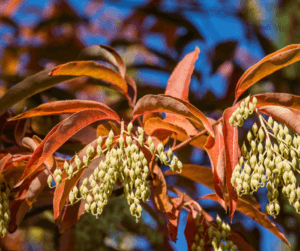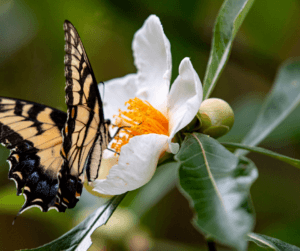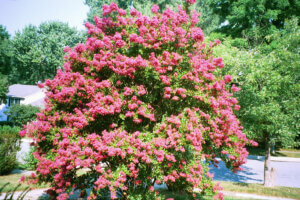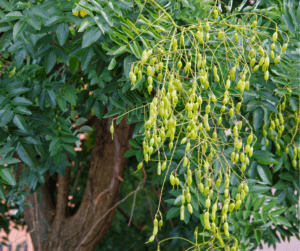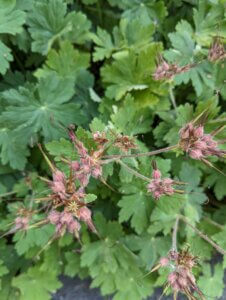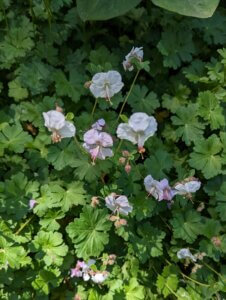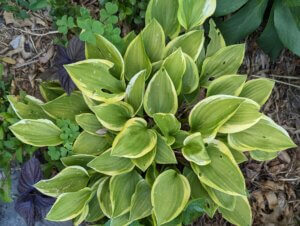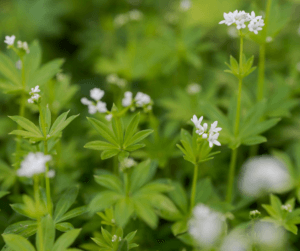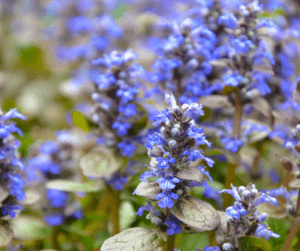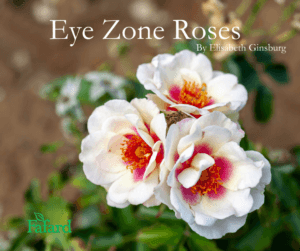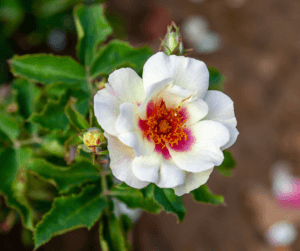
Carnations (Dianthus caryophyllus and hybrids), with their ragged, “pinked” edges, lovely colors, and long vase life, are staples of the cut flower trade. They also have a lengthy and celebrated history in gardens, going in and out of fashion many times over the centuries. The plants are having a renaissance right now, as flower lovers have come to appreciate their tried and true virtues.
About Dianthus
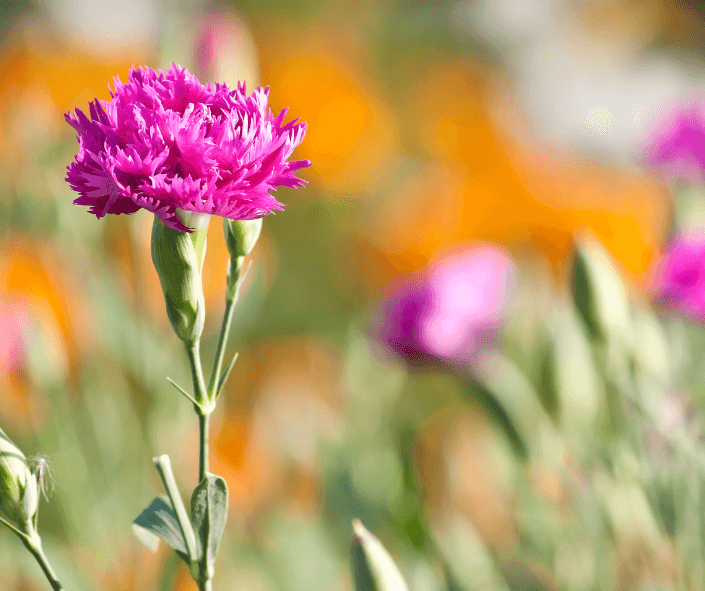
The dianthus family is large, with over 300 species, and contains carnations of all sizes, not to mention sweet Williams and the short-statured plants known in this country as “pinks”. In Europe, especially in Great Britain, the term “pinks” is used more generally to include just about all dianthus. Given the amount of interbreeding among species over the years, this may be the best informal way to categorize the whole group.
The flowers that you buy in bunches at the local florist or supermarket are generally referred to as “florists’ carnations”. They are specific varieties grown under greenhouse or controlled field conditions and sold in bulk to the floral trade. Cultivars that grow outdoors in home gardens are categorized as “border” or “garden” carnations. Between the two categories, the world of beautiful carnations is wide.
Garden Carnations

Border or garden carnations are generally short-lived perennials, hardy in USDA Zones 6 through 10. The stems can grow as tall as 3 feet, though many varieties, especially those developed in the last few decades, are considerably shorter. The stems are erect but tend to arch. Depending on height, some garden types may need staking or other means of corralling. The blue-green to gray-green leaves are long, narrow and attractive in their own right.
The singular look of the flowers is a combination of the distinctive ragged or ruffled edges, and the opulent, semi-double or double petal array of each flower. Most bear a characteristic spicy scent reminiscent of cloves, sometimes with other sweet fragrance notes mixed in. Available colors range from purest white to near-black, with bi-colored or even tri-colored varieties available from specialty merchants. While there are no true blue carnations (unless you put a cut stem in a container of water mixed with blue dye), the color and pattern ranges are still impressive.
Modern Garden Carnations
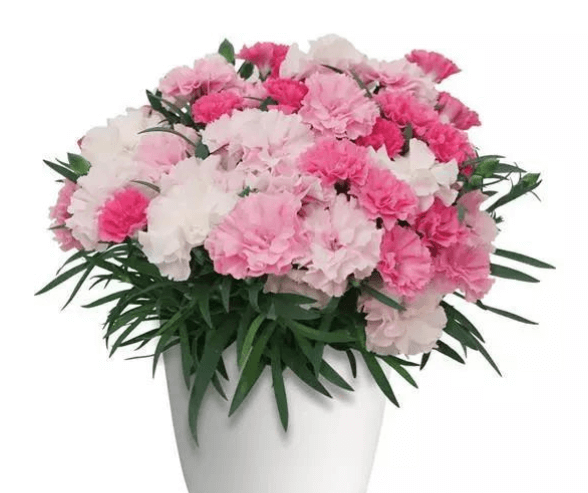
Modern large-flowered garden carnations are the result of hybridization of several different species. English author and gardener Vita Sackville West wrote admiringly about the Chabaud carnations, developed by a French hybridizer in the eighteen seventies. Some Chabaud types, like the pink-flowered ‘La France’ and ‘Benigna’, with white petals laced with red, are still in commerce today. Another antique variety, ‘Mrs. Sinkins’, combines shorter stature—about 12 inches tall—with big white flowers.
Modern varieties tend to be more compact than some older ones and come in an array of arresting colors and color combinations. As with many commercial hybrid plants, they are often marketed in named series protected by trademarks. Each series shares common features, like short stature and unusual coloration. Selecta One’s 2020 Dianthus introduction, ‘I♥U’ is a singular beauty with a compact habit and fluffy flowers that are rose-pink when they first open and age to near white. Scent First™ ‘Tickled Pink’ bears bright cerise flowers on 10-inch stems. ‘Horatio’, a hybrid splashed with dark red and white, grows to 12 inches. Little Sunflor™ ‘Amber’, at six to eight inches, is shorter still, with bright yellow petals. Flow® ‘Grace Bay’ is creamy yellow with narrow red edges, and dimensions similar to those of ‘Amber’. Super Trouper™ ‘Orange’ may be closer to peach than tangerine, but its unusual coloration stands out.
Growing Carnations
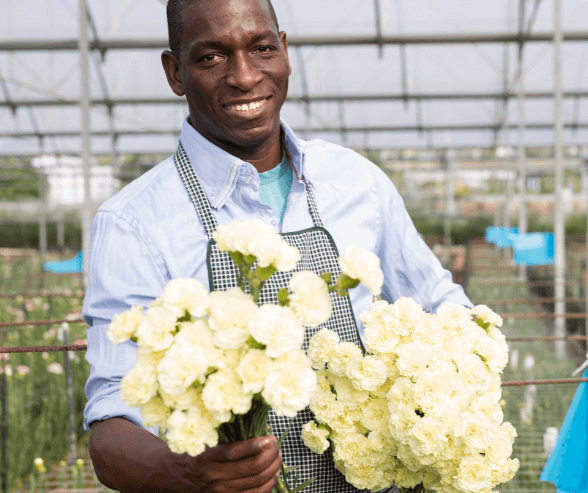
Like other members of the dianthus family, carnations are relatively easy to grow if you give them full sun and well-drained soil on the alkaline side of the pH spectrum. If you have acid soil, it may be best to install your carnations in medium to large containers or add lime to your garden soil according to package directions. Gardeners with heavy clay can amend the soil with organic material like Fafard® Premium Natural and Organic Compost.
Humans may love carnations, but garden varmints, like rabbits and deer, generally do not. If you have cats who roam the garden and are prone to sampling plants, take care, as the flowers can be irritating to feline mouths and stomachs.
At different times and places, carnations have been known by evocative names like “sops-in-wine,” “gillyflowers” and clove pinks. Whatever you call them, they add both beauty and drama to the summer landscape.

